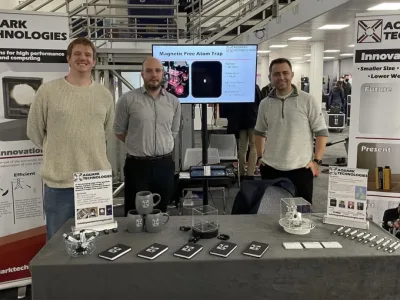Simulation takes the guess out of LED lighting junction temperature
Electronics design engineers face complex trade-offs when they design small high-power-consuming lighting devices like LEDs. The market wants smaller, brighter and more reliable lighting devices. But those features cost more.
Can designing the new generation of LEDs using simulation reduce their cost and improve their performance? Unlike traditional lighting solutions, LEDs have a maximum junction temperature of around 100°C whilst other lighting solutions are at around 2000°C.
This means that for LED lighting, there needs to be an effective heat transfer path to the ambient air; a thermal design challenge to say the least. A better heat transfer path is normally proportional to the cost of the product. The heat sink performance can be greatly decreased by adding a fan, but that adds noise and an extra reliability concern to the product. The challenge is to provide a cooling solution which is just as cost effective whilst satisfying the LED thermal requirements.
When designing LED cooling solutions, the size of the cooling solution can be directly related to the cost. A bigger heat sink means more weight and more material that has to be paid for. Optimization of a heat sink allows for the best possible performance for a given material cost. Natural convection heat sinks also have the benefit being more reliable than a fan cooled solution without the extra cost of the fan.
Could simulation tools be used to accurately predict the junction temperatures of LEDs and reduced hot spots while minimizing the size of the overall lighting product?

We looked at a lighting system consisting of three Philips Luxeon K2 cold white LEDs with 1A of forward current and 9.6 W of total power dissipation. The system had a required life time of 60,000 hours, with a maximum junction temperature limit of 124 °C at 20°C ambient and a maximum junction temperature limit of 150 at 40 °C ambient.


LED thermal test configuration


Measured temperatures


Simulation result from 6SigmaET
ATS Europe used Future Facilities’ 6SigmaET simulation software to model the thermal performance of the lamp alongside analytical calculations and the eventual experimental measurements. Different configurations of printed circuit boards (PCB) were evaluated using the software. The configurations included FR4 and metal core board configurations.
The models predicted that temperature drop across the PCB using the FR4 board configurations would be severe and preclude the use of a natural convection heat sink. After an optimized metal core board configuration was simulated, the heat sink size was determined by analytical methods and performance was confirmed with the software.
The heat sink was eventually selected from ATS’ standard LED heat sink catalogue. The heat sink design was optimized for a natural convection environment and coated with a highly efficient surface finish. 6SigmaET has the modelling capabilities necessary to accurately predict heat transfer and resulting temperature distribution throughout the LED down lighter assembly for a variety of design configurations. In the lighting system configuration we had opted for, 6SigmaET was able to predict temperatures within 4 percent of the experimental values.
About the author:
Norbert Engelberts is Director of Advanced Thermal Solutions, ATS Europe.
This article was first published in the March 2011 issue of eeNews Europe.
 If you enjoyed this article, you will like the following ones: don't miss them by subscribing to :
eeNews on Google News
If you enjoyed this article, you will like the following ones: don't miss them by subscribing to :
eeNews on Google News



